Aso Ichinomiya Resort “ASONOHARA” (Aso City, Kumamoto Prefecture)The housing development that tackled restoration of Aso’s 1,000-year-history grasslands
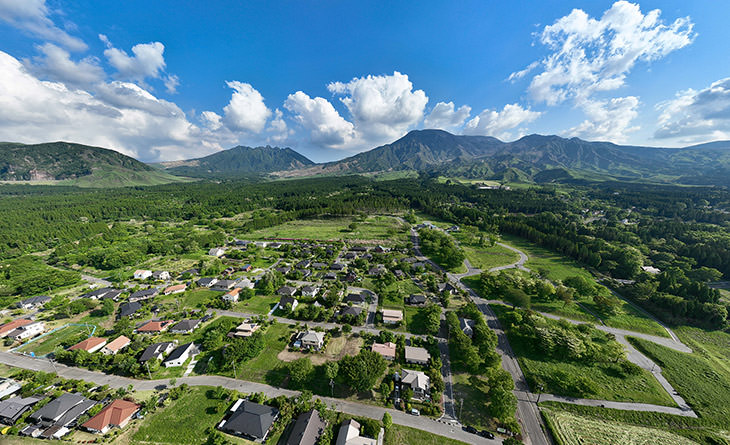
“Let’s keep green” is the group-wide concept upon which the Daiwa House Group undertakes an array of initiatives to protect biodiversity while on its path to becoming nature positive. As a housing development project in “Royal City Aso Ichinomiya Resort” located within Aso-Kuju National Park, “ASONOHARA” endeavors to reconstitute natural environmental value through the creation of a community that promotes regional resources.
Overview
Royal City Aso Ichinomiya Resort
Aso-Kuju National Park consists of volcanic mountains such as Mount Aso and the Kuju mountain range, and the magnificent rolling grasslands that surround them. Aso Ichinomiya Resort, located at the foot of Takadake, the highest of the five Aso peaks, has been a “Kurasu Mori,” or forest housing area since sales began in 1999, and has embodied a way of life for residents in over 200 households. This development has for many years been involved in community building, infrastructure development, and environmental preservation.
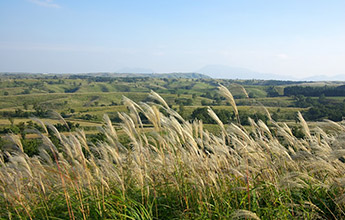
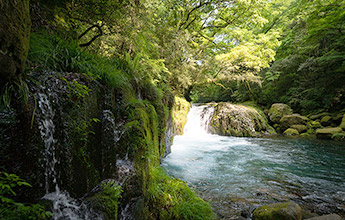
The majestic nature of Aso-Kuju National Park
ASONOHARA
Daiwa House Group started work in 2019 to develop this housing district, which we have named “ASONOHARA.” In order to preserve the area’s grasslands, which are synonymous with the Aso region and that have been watched over with human help for more than a thousand years, and to pass them on to future generations, we launched an initiative to conserve and restore the grasslands, and to protect the ecosystem together with homeowners as well as those in the local community.

Overview of housing development “ASONOHARA”
- Location
- Miyaji, Ichinomiya-machi, Aso City, Kumamoto Prefecture
- Residential land area
- Approximately 36,000m2 (29 lots)
- Development period
- 2019 to 2020
The result of a biodiversity survey that included adjacent areas revealed that in the past this area had been farmland, and subsequently through the years, artificially planted with cedar, cypress, and other coniferous trees species. Based on these results as well as discussions with existing property owners, the coniferous forests that had come to be degraded were divided into future grassland and woodland areas, and thinning and planting were carried out to restore the original Aso ecosystem.
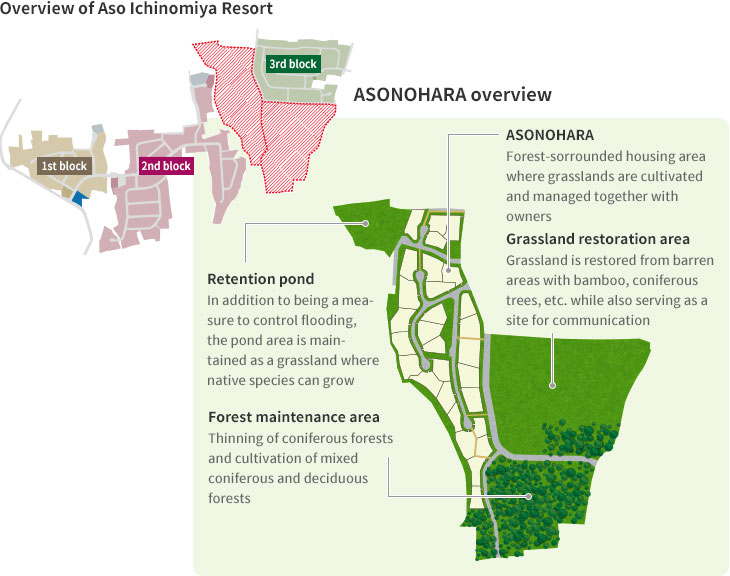
On the path to grassland restoration
ASONOHARA (housing area)
For this residential area to work in harmony with the natural terrain, we have formulated a community development charter (environmental preservation regulations), and work together with residents to cultivate grasslands. In the garden of each residence, we select a tree type to be managed, and plant it before the sale of the property. Along the roadside, we also cultivate tall-stemmed grasses such as Japanese pampas grass, which is the dominant species in the Aso grasslands, as well as medium- and low-stemmed grasses such as zoysia and cogon grass. Maintenance and management of the roadside areas is based on the advice of experts, and we set mowing frequencies to facilitate growth of respective grasses and trees. While we receive a management fee limited to grassland cultivation, Daiwa House performs regular management of the area.
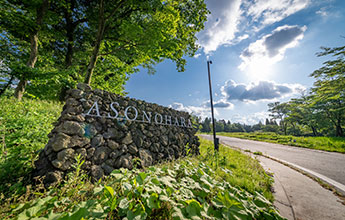
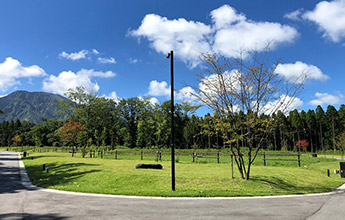
Consideration for biodiversity in community development
Care was taken not to fragment the habitat of flora and fauna on account of landscaping. The gutters are equipped with a slope to allow animals to escape in the event of a fall, and with a design intended to prevent animals habitat from being cut off. With facilities and motifs that make use of local resources throughout, we are working to create a community capable of abundant biodiversity where residents can feel connected to the surrounding area.
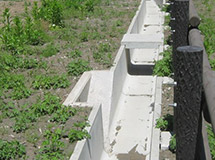
Forethought has been given to preventing animal habitat fragmentation
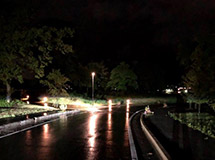
Illumination has been designed with animals and starry night skies in mind
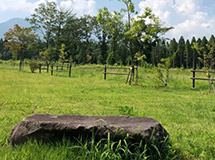
A stone bench made of a local Aso boulde
An area of restored grasslands
In order to replicate the original grasslands of Aso, a portion of the area was planted with Japanese pampas and cogon grasses procured from nearby areas, creating a green space that also brings to mind cultural landscapes. We are currently working in cooperation with the Aso Grassland Restoration Committee and local residents to conduct monitoring by property owners and hearings with experts two to three times a year. As a result of such monitoring surveys, we were able to confirm that the grasslands are home to yellow corydalis and the harvest mouse, which are designated as semi-threatened species by the Ministry of the Environment and Kumamoto Prefecture, as well as grassland component species such as the tufted vetch, cinquefoil, and tiger thistle.
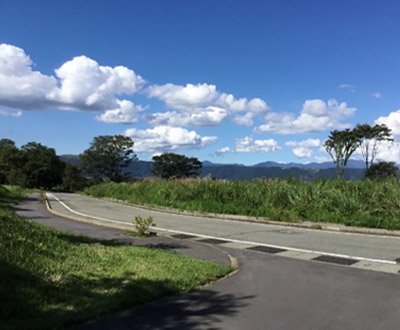
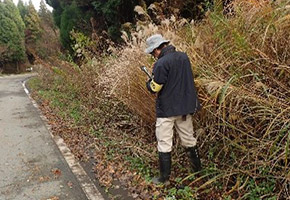
A specialist conducts monitoring activities
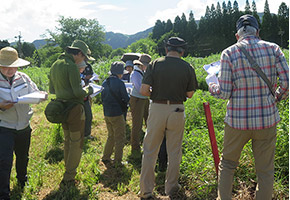
Monitoring by property owners
Grassland flora confirmed through monitoring
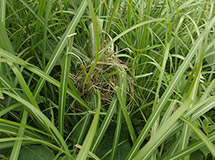
A harvest mouse brush nest
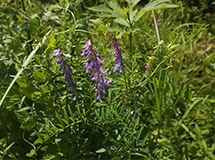
Tufted vetch
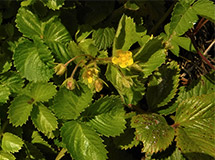
Cinquefoil
Co-creation activities with property owners and the local community
Collaboration with the local community is essential to linking the next generation to the natural environment. We regularly hold various activities for communication so as to build a framework that protects and nurtures the environment together with property owners. As opportunities for people to come into close contact with an area rich in nature, while in conjunction with grassland restoration efforts, these activities include sessions to brief on the characteristics of plants unique to Aso, the creation of “BEE HOTEL” hives to facilitate pollination by bees, and making wild grass compost.
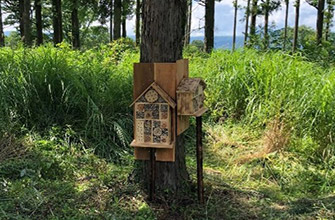
BEE HOTEL
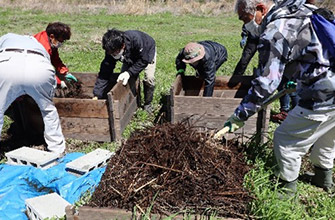
A workshop to make wild grass compost
Working toward forest restoration
Woodland improvement area
Thinning to allow sunlight to reach the forest floor took place in about 50% of the cedar and cypress coniferous forests that had become degraded and dark with sparsely growing ground ferns. Subsequent monitoring surveys revealed the emergence of a number of grassland plants that had been lying dormant underground, such as aster and yellow corydalis. Going forward, the plan is to encourage the sprouting of thickets and to gradually transform the area from a planted forest to a mixed coniferous-deciduous forest over a period of several decades.

The degraded coniferous forest prior to thinning
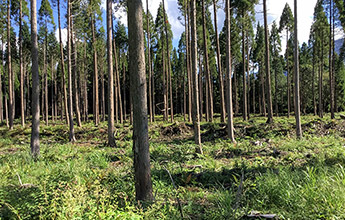
After thinning, sunlight is able to reach forest floor
Grassland plants had been dormant under the surface
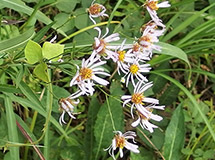
Aster
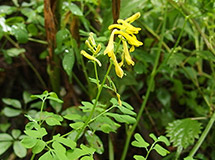
Yellow corydalis
Third-party certification leads to increased environmental value
We received the highest rank of JHEP certification and ABINC Special Award
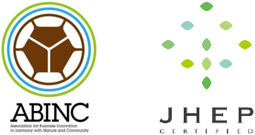 At ASONOHARA, we are also working to obtain and renew environmental certifications that enable us to objectively evaluate the policies and results of each initiative in order to continue activities that have enhanced value for biodiversity conservation.
The Association for Business Innovation in harmony with Nature and Community (“ABINC”) certification we acquired in February 2020 is a system that evaluates land use concepts that take biodiversity conservation into consideration and includes co-creation activities with stakeholders, from a wide range of perspectives. In April 2023, we were honored with the ABINC “Special Award” that recognized our outstanding efforts, even among other certified facilities, with particular attention to our restoration plan utilizing the unique grassland environment of Aso and activities to engage with stakeholders.
At ASONOHARA, we are also working to obtain and renew environmental certifications that enable us to objectively evaluate the policies and results of each initiative in order to continue activities that have enhanced value for biodiversity conservation.
The Association for Business Innovation in harmony with Nature and Community (“ABINC”) certification we acquired in February 2020 is a system that evaluates land use concepts that take biodiversity conservation into consideration and includes co-creation activities with stakeholders, from a wide range of perspectives. In April 2023, we were honored with the ABINC “Special Award” that recognized our outstanding efforts, even among other certified facilities, with particular attention to our restoration plan utilizing the unique grassland environment of Aso and activities to engage with stakeholders.
Japan Habitat Evaluation and Certification Program (“JHEP”), which we first obtained in June 2020, is a scheme that quantitatively evaluates and certifies efforts to preserve and recover biodiversity. The importance of grasslands to the Aso region, and the fact that the project was recognized as a rare and valuable activity and an unprecedented plan for residential land development to restore grasslands, earned us the highest possible rating of AAA, a first for the company.
- * JHEP A certification system to quantitatively evaluate and certify the contribution to biodiversity conservation and recovery. Evaluations come in an 11-tier range, from AAA to D, with JHEP certification possible with a B+ score or above.
- * ABINC A system that provides ideas and prescriptions for land use that take biodiversity conservation into consideration and that visualizes the results of such efforts.
Comments pertaining to recognition through the ABINC Special Award
This is a project underpinned by the unique Aso grasslands environment, taking into account the results of advance monitoring surveys, terrain contours and other factors. The company intends to continue planning, management, and operation of the project while maintaining its cooperation with local ecosystem specialists and those people in the area who possess expertise.
Comments pertaining to recognition with JHEP certification
As the greatest challenges of our time are the restoration of biodiversity and countermeasures to combat climate change, this project has become even more important as the center of an ecological network in the area, and is a leading example of appealing community planning that coexists with nature. With international calls for ESG management, nature positivity, and 30-by-30 initiatives, the role of corporations in realizing a sustainable economy and society has never been more in the spotlight than it is today. We hope that these efforts will be sustained and expanded, and that work to conserve the region’s genetic resources will continue and grow.
* Quoted from the general review in the 1st update and assessment report for JHEP certification for the Aso Ichinomiya Resort - ASONOHARA Grassland Cultivation Project (June 2024).



